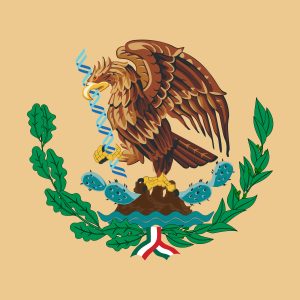Cinco de Mayo, a holiday that most Americans associate with margaritas and tequila, is actually a day to celebrate the Mexican Army’s unlikely victory over the French Empire in 1862. And despite its confusion with Mexico’s Independence Day, Cinco de Mayo has been adopted as a day for Mexican Americans and anyone of Mexican descent to celebrate their heritage. So in order to celebrate, we wanted to talk about the unique genetic diversity of the peoples of Mexico!

Imagine if two people from New York City and Washington DC were as genetically different as two people from Kenya and Iceland. Such extreme genetic variation in such a small geographical distance is exactly the case in Mexico. In 2014, the first fine-scale study of the genetic variation of the Mexican population was completed using the samples of 511 indigenous peoples ranging all the way from the Sonoran desert in the north to the Yucatan Peninsula in the South. According to the study, Mexico contains 65 different indigenous ethnic groups, only 20 of which were actually represented in the study. The genetic information from these groups was used to create a genetic “blueprint” of sorts to map out variation from population to population within the country. And the resulting map showed that Mexico boasts some of the highest genetic variation amongst its peoples compared to any other nation.
But how can a nation of people boast so much diversity? The answer can be attributed to the varying landscapes of Mexico. Vast mountain ranges, deserts, rivers, etc acted to separate groups of indigenous people for thousands of years. This isolation lead to the development of distinct genetic traits that continue to show themselves today. In fact, the farther apart two indigenous populations lived, the more genetically different they became. According to Stanford population geneticist Carlos Bustamante, these traits are know as “globally rare but locally common”. This means that the distinct traits found in each indigenous population can very rarely be found in other populations around the world, but are found in almost everyone within that indigenous group.
Of course, not all Mexicans are fully indigenous. Many are a mixture of indigenous populations, European and African. Samples from these genetically diverse peoples were also taken and it was found that despite the introduction of new genetic material, indigenous traits were still highly prevalent, making it easy to infer information about the ancestry of Mexicans who may not be 100% indigenous.
So what does all of this mean? While it’s certainly a fun fact to know how genetically diverse Mexico really is, it can also be an important step in the medical treatment of the Mexican people. Due to such varying genetic traits, certain health tests and medications may differ in their effectiveness depending on where and who they’re being conducted upon. For example, indigenous peoples from the north may have a genetic trait that makes causes them to be at higher risk for lung disease compared to indigenous peoples from the south. Simply understanding a persons genetics could mean specialized health care for different indigenous populations rather than a blanket approach, leading to more effective health care and overall treatment. Of course, the science and research still has a ways to go before such nuances can be effectively addressed, but it’s a bright look into the genetically unique and diverse future of such a beautifully festive nation.

